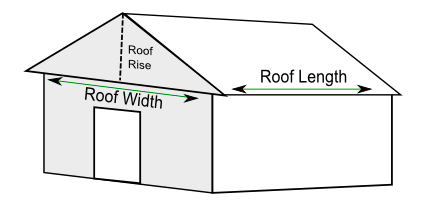Construction details of Roofs and its Pros and Cons.

The roof is the uppermost portion of the building which protects the building from rain, sun, and wind. There are various types of roofs and it is a divide in three types :
Flat Roofs :
Flat roofs are used in grassland where rainfall is not much and the climate is average. There is a slight slope given to drain out the rainwater. All types of upper storey floors can set out as flat roofs. Many times top of these roofs are treat with waterproofing materials like mixing waterproofing chemicals in concrete, providing Coba concrete.
Advantages :
- They can be fireproof.
- They can suit any shape of the building.
- It can use as a terrace for celebrating functions, playing, or many other things.
- At any stage, the roof can be change into a floor by adding another storey to the building.
- Over-head water tanks can be easily located.
Disadvantages :
- Leakage problems might appear after a while because of the cracks.
- They cannot cover large column-free areas.
- The initial cost of the construction is more.
- The speed of constructing this is less.
- In places where snowfalls, flat roofs are to be avoide to reduce snowfall.
- The deadweight of flat roofs is more.
Pitched Roofs :
In the areas where heavy rainfall and snowfalls sloping roofs get in use. These types are known as Pitched roofs. The sloping roofs go for in large cross structures like warehouses, factory buildings, workshops, and many more. In these, A.C. sheets, slates, tiles, G.i. sheets, and many more come for covering it. The pitched are classified into :
Single :
In Single Roofs, the span of it is less than 5 m. It is like Lean-to roofs, Couple, Couple-close, and Collar beam, in all these, are rafters place at 600 mm to 800 mm spacing. Fasten run over the rafters to support tiles.

Double or Purlin :
If the length beat, the cost of the rafters increase and single roof becomes extravagant. For span, more than 5 m Purlin is chosen. The in-between support is given to the beam by purlins supports over collar beams.
Trussed :
If the length is more, a framework of slim members uses to support the sloping roofs. These frames are known as Trusses. The number of trusses may be kept lengthwise to get wall-free longer halls. Purlins are on condition that over the trusses which in turn support sheets. For span, up to 9 m wooden trusses may be used but for larger spans, steel trusses are a must.
In the case of wooden trusses, acceptable carpentry joints are to be make to connect various members at a joint. Straps and bolts are getting in use. In this case of steel trusses joints are prepare by using hem plates and by providing bolts or fixed or fuse. Depending upon the length, trusses of different shapes come into use. Trusses’ ends are supports on walls or on columns.
Shells and Folded Plate Roofs :
Shell roof may be explain as a curved surface, the thickness of which is small compares to the other dimensions. In these lots of load is transfers by layer compacting instead of by curving as in the case of the conventional slab and beam constructions. Caves are having natural shell roofs. A study of places of worship built in India, Europe, and Islamic nations shows that shell structures were in use for the last 800 to 1000 years. However, the shells of the middle ages were huge stone wall structures but nowadays thin R.C.C. shell are constructs to cover large column-free areas.
Advantages :
- Material utilization is less.
- Large column-free areas are cover.
- Good from an attractiveness point of view.
- Formwork can be remove early.
Disadvantages :
- Formwork is costly.
- The top surface is bend, hence the advantage of the terrace is lost.




